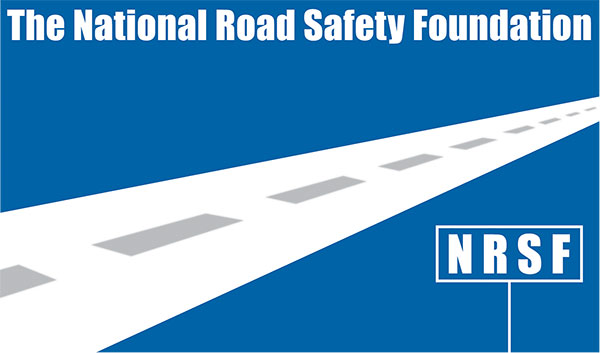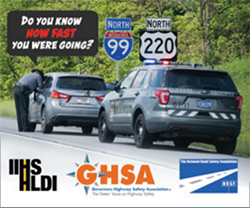
For more than 50 years, The National Road Safety Foundation, Inc. (NRSF) has been dedicated to reducing crashes, deaths and injuries on our nation’s highways by promoting safe driving behavior through greater public awareness. GHSA teamed up with The National Road Safety Foundation, Inc. (NRSF) to address active youth transportation, drowsy driving and speeding.
Going on Now: Active Transportation Grants
GHSA and the NRSF provided funding to State Highway Safety Offices (SHSOs) in Hawaii, Idaho, Maryland, Oregon and Texas to support, implement and evaluate youth active transportation safety programs. These SHSOs are developing programs to promote safe walking, bicycling and scooter riding practices and serve as models that can be replicated by SHSOs.
- The Hawaii Department of Transportation’s (HDOT) Highway Safety Office and the Ka'u School District are collaborating to enhance safe transportation for the youth of Ocean View, Naalehu and Pahala. This initiative builds upon qualitative research conducted by HDOT and the University of Hawaii aimed at addressing traffic safety issues in this underserved community. To promote safe walking from transit stops to school, students will be provided reflective materials, whistles and shoes. In addition, as a result of community listening sessions, infrastructure and systems recommendations will be shared with local safety engineers and transit providers.
- The Idaho Office of Highway Safety is partnering with the Idaho Walk Bike Alliance to provide several communities hands-on classroom instruction specifically curated for Idaho’s roads. This project aims to fill an educational void for middle and high school students, specifically bridging the gap between K-6 Safe Routes to School programming and driver education and training. Students will learn about active transportation modes such as walking, biking or scooting, which provide equitable access to school for many in the community.
- The Maryland Department of Transportation Motor Vehicle Administration’s Highway Safety Office is teaming up with the City of Salisbury and Salisbury University to launch a new project focused on enhancing transportation safety in the area. The project aims to empower young leaders to be peer-to-peer educators so they can teach their fellow youth about pedestrian, bicycle and other safe mobility practices.
- The Oregon Department of Transportation, in partnership with the state’s Safe Routes to School program, will construct a demonstration crosswalk and walking route in Odell, Ore., providing a safe way for elementary students to get to school. To involve youth in the project, a free after-school club for 5th-8th graders will be created. The club will take walking and rolling adventures within a mile of the school and engage neighbors and local businesses in the demonstration project. Once the installation is completed, the Odell Mid Valley Elementary School “Pumas” will be encouraged to join a walking school bus that will take this route to and from school.
- The Texas Department of Transportation is planning to equip its Traffic Safety Specialists with an outreach toolkit that includes active transportation educational resources. The toolkit will be used to host youth transportation safety events across the state during which students can learn about safe bicycling, road patterns and best practices when riding on the road. The events will provide students with interactive activities that simulate road scenarios in a safe environment separated from motor vehicle traffic.
Speed Management Pilot Program
 GHSA has been partnering with NRSF and the Insurance Institute for Highway Safety (IIHS) since 2019 to slow down speeding drivers. In 2020, Maryland and Virginia were each awarded $100,000 grants to develop, implement and evaluate speed management pilot programs leveraging engineering, equitable enforcement, education, public outreach and advocacy strategies simultaneously.
GHSA has been partnering with NRSF and the Insurance Institute for Highway Safety (IIHS) since 2019 to slow down speeding drivers. In 2020, Maryland and Virginia were each awarded $100,000 grants to develop, implement and evaluate speed management pilot programs leveraging engineering, equitable enforcement, education, public outreach and advocacy strategies simultaneously.
Maryland conducted its pilot on a rural roadway in August and September of 2021, with the results scheduled for release this spring. Virginia's project, an urban setting, is expected to launch later this year. Both project start dates were delayed to allow traffic patterns, impacted by the COVID-19 pandemic, to stabilize enough for IIHS to conduct a valid before-and-after evaluation.
The goal is to develop a template for effective speed-reduction strategies that can be duplicated in other states and communities.
State Grants to Address Drowsy Driving
NRSF also provided grants for State Highway Safety Offices (SHSOs) to implement drowsy driving prevention programs and campaigns. From 2017 to 2019, 12 states received a total of $225,000. Among other projects, states used these funds to create public awareness campaigns, engage with high-risk groups such as teens, and develop training for law enforcement officials to recognize the signs of drowsy driving.
Learn about these innovative and creative projects here.
